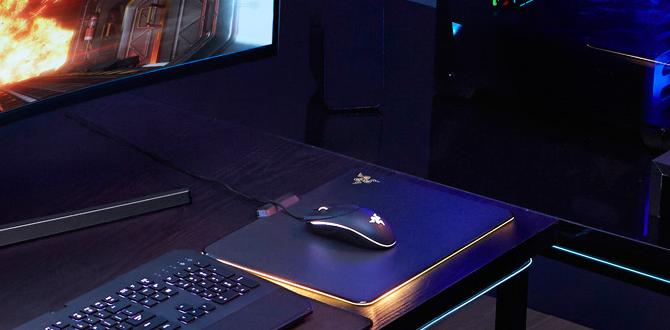When it comes to setting up a gaming PC, the choice of monitor plays a crucial role in your overall gaming experience. While regular computer monitors can work for gaming, there are several factors to consider to ensure optimal performance and visual quality. In this guide, I will delve into the compatibility of regular computer monitors, resolution and refresh rate considerations, input connectivity options, screen size and panel type, additional features to enhance gaming, and adjusting settings for smooth performance.
Compatibility of Regular Computer Monitor
Resolution and Refresh Rate Considerations
When using a regular computer monitor for gaming, it’s essential to consider the resolution and refresh rate. Opt for a monitor with at least 1080p resolution for crisp visuals, and a high refresh rate (such as 144Hz) for smooth gameplay without motion blur.
Input Connectivity Options
HDMI, DisplayPort, and DVI Compatibility
Check the input connectivity options on your regular computer monitor to ensure compatibility with your gaming PC. Look for monitors with HDMI, DisplayPort, or DVI ports for seamless connectivity and optimal performance.
Screen Size and Panel Type
Optimizing Gaming Experience
Consider the screen size and panel type of your regular computer monitor to enhance your gaming experience. A larger screen size provides a more immersive gaming experience, while panel types like IPS or TN can impact color accuracy and response time.
Additional Features to Enhance Gaming
G-Sync, FreeSync, and HDR Support
Look for additional features like G-Sync or FreeSync support for smoother gameplay and reduced screen tearing. HDR support can also enhance the visual quality of your games by providing more vibrant colors and better contrast.
Adjusting Settings and Setup Tips
Ensuring Smooth Performance
Adjust the settings on your regular computer monitor to optimize performance for gaming. Make sure to enable features like game mode, adjust brightness and contrast levels, and position the monitor at the right angle for comfortable viewing.
Conclusion
While using a regular computer monitor for gaming is possible, consider the resolution, refresh rate, input connectivity options, screen size, panel type, and additional features to ensure an optimal gaming experience. With the right setup and adjustments, you can enjoy smooth performance and immersive gameplay on your gaming PC.
FAQs
1. Can I use a regular monitor for console gaming?
Yes, you can use a regular monitor for console gaming by connecting the console to the monitor using HDMI or other compatible ports.
2. Do all gaming monitors support HDR?
No, not all gaming monitors support HDR. Make sure to check the specifications of the monitor to see if it has HDR support.
3. What is the difference between G-Sync and FreeSync?
G-Sync is NVIDIA’s adaptive sync technology, while FreeSync is AMD’s equivalent. Both technologies help to eliminate screen tearing and provide a smoother gaming experience.
4. How important is the response time of a gaming monitor?
The response time of a gaming monitor is important as it determines how quickly pixels can change colors. A lower response time results in less motion blur and smoother gameplay.
5. Can I connect multiple devices to a gaming monitor?
Yes, many gaming monitors come with multiple input ports, allowing you to connect multiple devices such as gaming consoles, PCs, and laptops for versatile use.
